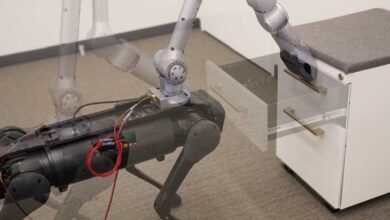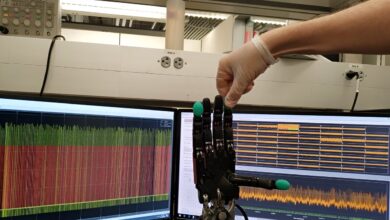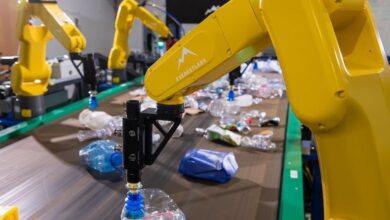Bionic Spine Enhances Soft Robots’ Adaptability

In a recent study published in the journal The Innovation, researchers proposed a bionic spine concept for soft robots, aiming to enhance their adaptability and intelligence through the integration of sensing and actuation capabilities. They drew inspiration from the highly evolved backbones of vertebrate animals, which coordinate sensory input and motor control and created a device that mimicked this functionality in soft robots.
Background
Soft robots, made of flexible materials such as rubber, silicone, or polymer, have gained significant attention in the field of robotics due to their flexibility and adaptability to navigate unstructured environments effectively. These robots, capable of mimicking the structure and function of biological organisms such as octopuses or starfish, offer several advantages like high deformability, adaptability, and safety. However, they also face challenges such as low efficiency, limited intelligence, and complex control.
A crucial component of soft robots is the spine, which provides support, drive, and sensing for the robot’s body, enabling it to perform complex motions like bending, twisting, or crawling. However, most existing spine designs are limited to either sensing or driving the robot and often rely on external sensors or controllers, increasing the system’s complexity and cost. Therefore, there is a need for a spine design that can perform both sensing and driving functions simultaneously and integrate them seamlessly into the soft robot’s body.
About the Research
In this paper, the authors developed a novel bionic spine design for soft robots that integrates sensing and actuation capabilities into a single device. The bionic spine utilizes the reversible piezoelectric effect of materials like lead zirconate titanate (PZT) to convert mechanical stress into electrical signals for sensing and generate electric signals for actuation. This design eliminates the need for separate sensing and actuation components, making the system more efficient and less complex.
The bionic spine is composed of three parts: a PZT layer, a soft rubber layer, and a conductive layer. The PZT layer is sandwiched between the soft rubber layer, which provides flexibility and elasticity, and the conductive layer, which offers electrical connection and shielding. The bionic spine can be fabricated using a simple and low-cost hot pressing and cutting method.
The researchers designed and tested a soft robot that uses four bionic spines as its main body. The soft robot can perform a closed-loop workflow of environment recognition, self-decision, and active regulation, enabling it to achieve efficient locomotion and obstacle avoidance in various terrains, including land and water. It can also adapt to different environments and tasks, such as climbing, swimming, or carrying loads, showcasing the versatility and potential of the bionic spine design. Furthermore, a learning-based gait adjustment algorithm was implemented which enables the robots to recognize and actively adapt to changing environmental conditions.
Research Findings
To evaluate the performance and functionality of the bionic spine and the soft robot, the authors conducted a series of experiments. They measured the piezoelectric properties of the bionic spine, including output voltage, output power, and sensitivity. The outcomes revealed that the bionic spine could produce a maximum output voltage of 3.2 V and a maximum output power of 0.8 mW at a bending angle of 90° and a frequency of 1 Hz. Additionally, the bionic spine exhibited high sensitivity in detecting deformation and strain, with values of 0.12 V and 0.06 V, respectively.
Furthermore, the paper assessed the locomotion and obstacle avoidance capabilities of the soft robot across various terrains. The soft robot demonstrated impressive performance, achieving a maximum speed of 8.4 cm/s and a maximum step length of 6.8 cm on flat ground.
It successfully climbed a slope of 30°, crossed a stair with a height of 3 cm, traversed a sand pit measuring 10 cm in depth, navigated through a grass field with a height of 15 cm, and swam in water at a speed of 2.4 cm/s. Moreover, the soft robot showcased effective obstacle avoidance by adapting its shape and direction to navigate around obstacles of different shapes and sizes, including cylinders, cones, and cubes.
Applications
The bionic spine soft robot, with its high flexibility, adaptability, and intelligence, shows great potential for various applications in exploration, rescue, and medical fields. Its ability to navigate and interact with unstructured environments makes it suitable for exploring unknown and complex terrains, such as caves, tunnels, or underwater areas, and gathering valuable data.
In rescue operations, the bionic spine soft robot can assist in searching for survivors, delivering supplies, or clearing debris, potentially improving the efficiency and safety of the mission. Additionally, the robot’s adaptability and sensing capabilities make it a promising tool for medical purposes, such as drug delivery, minimally invasive surgery, or rehabilitation therapy, where precise and gentle manipulation is crucial.
Conclusion
In summary, the researchers introduced a significant advancement in the field of intelligent and adaptable soft robots through the development of the bionic spine soft robot. By harnessing reversible piezoelectric effects, this innovation demonstrated the potential to create soft robots capable of complex tasks and behaviors in diverse environments, all without the need for external sensors or controllers.
Future work could focus on refining the design and performance of the bionic spine and soft robot, exploring alternative physical effects, and creating diverse and multifunctional soft robots.



